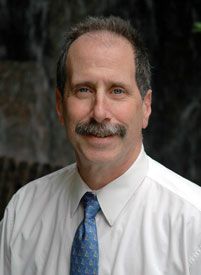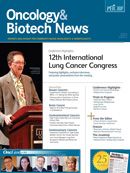Publication
Article
Oncology & Biotech News
Evidence for Allogeneic Versus Autologous Stem Cell Transplant in Hematologic Malignancies
Author(s):
William I. Bensinger, MD, tackles the complex subject of the role of hematopoietic stem cell transplantation (HSCT), including when to transplant and whether to use allogeneic versus autologous transplant.

At the NCCN 6th Annual Hematologic Malignancies Congress, William I. Bensinger, MD, tackled the complex subject of the role of hematopoietic stem cell transplantation (HSCT), including when to transplant and whether to use allogeneic versus autologous transplant. Bensinger is professor of Medicine at the University of Washington School of Medicine and director of the Autologous Stem Cell Transplant Program at the Fred Hutchinson Cancer Research Center in Seattle.
He posed the following questions:
- Do novel agent induction regimens improve outcomes after autologous stem cell transplant (ASCT) in myeloma?
- Does functional imaging predict outcomes after HSCT for Hodgkin disease?
- Should upfront transplant be a standard for mantle cell non-Hodgkin lymphoma?
- Should we use autologous or allogeneic stem cell transplant for acute promyelocytic leukemia (APL) and when should we transplant?
In myeloma, NCCN guidelines state that patients aged <70 years with partial response, major response, stable disease, or primary resistant disease following induction therapy have improved outcomes with ASCT. Tandem autologous transplants, however, do not improve outcomes.
Bensinger said it is unclear whether patients in complete remission following induction with conventional chemotherapy benefit from ASCT. Survival is equivalent whether ASCT is performed up front or as salvage therapy. The use of novel agents such as lenalidomide and bortezomib prior to ASCT improve major response rates and progression-free survival, but have not improved overall survival, he said.
“We still don’t know which drug combinations are optimal for a patient proceeding to transplant and the role of transplant in a patient with complete remission after novel induction therapy,” Bensinger noted.
“
We still don’t know which drug combinations are optimal for a patient proceeding to transplant and the role of transplant in a patient with complete remission after novel induction therapy. ”
—William I. Bensinger, MD
Turning to Hodgkin disease, he said that ASCT is preferred over allogeneic SCT. Functional imaging pretransplant improves prediction of outcomes posttransplant. Now, patients who are PET-positive are given rituximab pretransplant, which may improve outcomes. The role of transplant in chronic lymphocytic leukemia is not clear. There are also no good data in follicular non-Hodgkin lymphoma on the role of transplant.
In mantle cell lymphoma, ASCT is preferred over allogeneic transplant, “but this is very controversial and based on weak evidence,” Bensinger said. The controversy revolves around when to transplant and whether rituximab will improve survival.
Allogeneic stem cell transplant is preferred for acute myelocytic leukemia and for APL.










